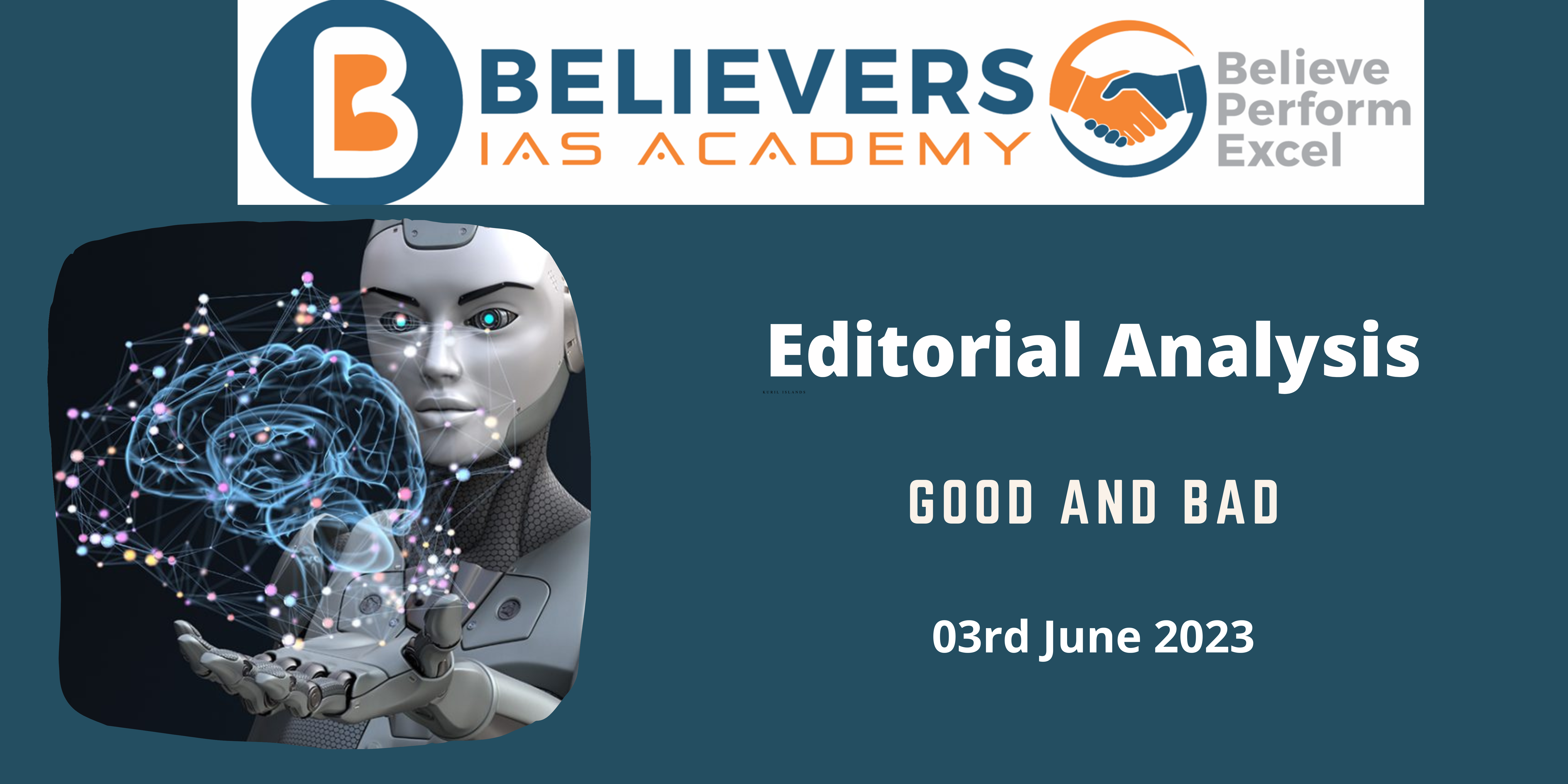Good And Bad
Context :
Artificial intelligence (AI) that can generate fresh data is known as generative AI. Even though they are capable of more, generative AI is widely employed in the world today to generate text, graphics, and code in response to user requests. Their extensive use greatly exaggerated their capabilities, inspiring first wonder and then concern.
Artificial intelligence (AI) 
- The study of intelligent computers that can carry out tasks that traditionally require human intelligence is the focus of the discipline of artificial intelligence (AI), a subfield of computer science.
- A branch of AI called “machine learning” enables computers to learn from experience and get better over time without having explicit programming instructions. It entails the creation of algorithms capable of data analysis, pattern recognition, and prediction or decision-making.
- A branch of machine learning called deep learning is concerned with creating artificial neural networks that are modelled after the human brain. These neural networks have numerous interconnected layers and are capable of automatically learning data representations and extracting intricate features.
- The area of artificial intelligence known as natural language processing is concerned with how computers and human language interact. It involves activities like text generation, sentiment analysis, language translation, and speech recognition.
- Important ethical questions are raised by the quick development of AI. Privacy concerns, algorithmic prejudice, employment displacement, and societal effects are a few of them. A major concern is ensuring the ethical and responsible development and application of AI.
Concerns:
- Falsification of Data: The passage emphasises how generative AI can produce plausible but incorrect information, making it challenging to tell the difference between true and altered data.
- Lack of Transparency: AI models’ inner workings, especially those supported by neural networks, can be puzzling. Concerns concerning accountability and comprehension of the hazards involved with these approaches are brought up by this lack of openness.
- Use of Copyrighted Data: AI models frequently draw on enormous datasets, some of which may contain copyrighted data. The paragraph makes the argument that using this data without the right authority causes moral and legal issues.
- Human Dignity and Privacy: The author stresses the significance of taking into account human dignity and privacy when creating and applying AI. Carefully considering the potential effects on people’s rights and autonomy is necessary.
- Protection Against Misinformation: Because AI can provide plausible but inaccurate information, there is a risk that misinformation and disinformation will proliferate, which can have serious societal repercussions.
Way Forward:
- Open-Source AI Risk Profile: According to the passage, the Indian government needs to create and update an open-source AI risk profile regularly. This would entail evaluating the potential risks connected to AI technologies and disseminating transparent data to the general public, researchers, and policymakers.
- Sandboxed R&D Environments: The paragraph suggests the use of sandboxed research and development environments to test potentially dangerous AI models. Researchers might examine and assess AI systems in these safe conditions without worrying about unanticipated harmful effects.
- Promotion of Explainable AI: The passage highlights the need for developing explainable AI, which refers to AI systems that can provide understandable explanations for their decisions and actions. This would enhance transparency, accountability, and the ability to detect and address biases or unethical behaviour.
- Definition of Intervention Scenarios: The passage suggests that policymakers should define specific scenarios in which intervention in AI systems is necessary. By anticipating potential risks and harmful outcomes, policymakers can establish guidelines and regulations to safeguard against these risks.
- Maintaining Oversight: The passage highlights how critical it is to keep an eye out for potential problems and to oversee the deployment of AI. This would require regulatory authorities or governmental organisations to regularly monitor AI technology and their effects on society, ensuring that moral norms are being followed and spotting any concerns.





